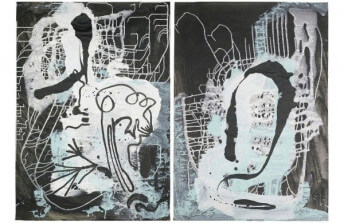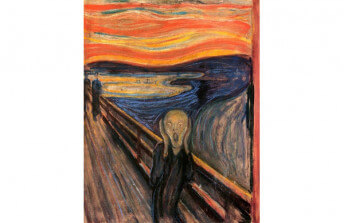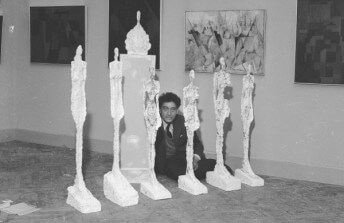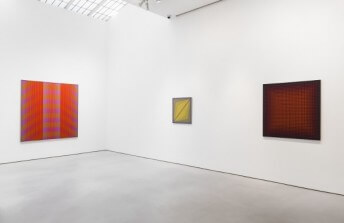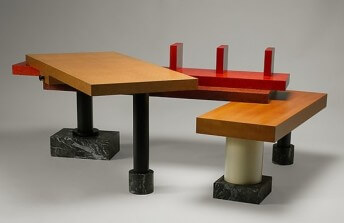The Wall Works by Imi Knoebel at Von Bartha
Jun 26, 2017
Imi Knoebel is a conceptual artist. That may sound like a controversial statement to many who know his work. Knoebel more often tends to be associated with things like Minimalism and Geometric Abstraction than Conceptualism. And as is demonstrated aptly by the current exhibition of new large-scale wall works by Knoebel at Von Bartha Gallery in Basel, Switzerland, the German artist could easily be described as much more of a traditional object maker than someone who is working in the realm of philosophical ideas. Like most of the other studio work Knoebel has been making since the 1980s, his new works continue his practice of constructing shapes out of aluminum then painting their surfaces with acrylics. It seems like a straightforward process, and they works look pared down and abstract. When taken at face value they seem to be only about issues like “color, form and surface,” as the press materials for the exhibition indicate. And the only relationships they seem to address are the ones that might exist between materials, shapes and hues. In other words, they seem to exist as far from the realm of philosophy as artworks can possibly get. But like Knoebel himself, they are perhaps more complicated than they seem. For those interested in taking the time to look more deeply at these works and at Knoebel himself, there may be much more to consider than theoretical aesthetic concerns, such as the inherent potential for artists and their creations to interact with the larger outside world.
Student of Joseph Beuys
Imi Knoebel was born in Dessau, Germany, in 1940. He began his formal university education at Darmstadt College, a school devoted to the applied arts and sciences. But after hearing about the novel teaching approaches of an art professor named Joseph Beuys, Knoebel moved across the country to Düsseldorf, where Beuys was the professor of something called “Monumental Sculpture” at the Kunstakademie. Knoebel was fascinated by how, rather than focusing on the importance of creating aesthetic objects, Beuys was focused on the philosophies underlying the creation of a work of art. As Beuys once said, “Objects aren’t very important any more. I want to get to the origin of matter, to the thought behind it.”
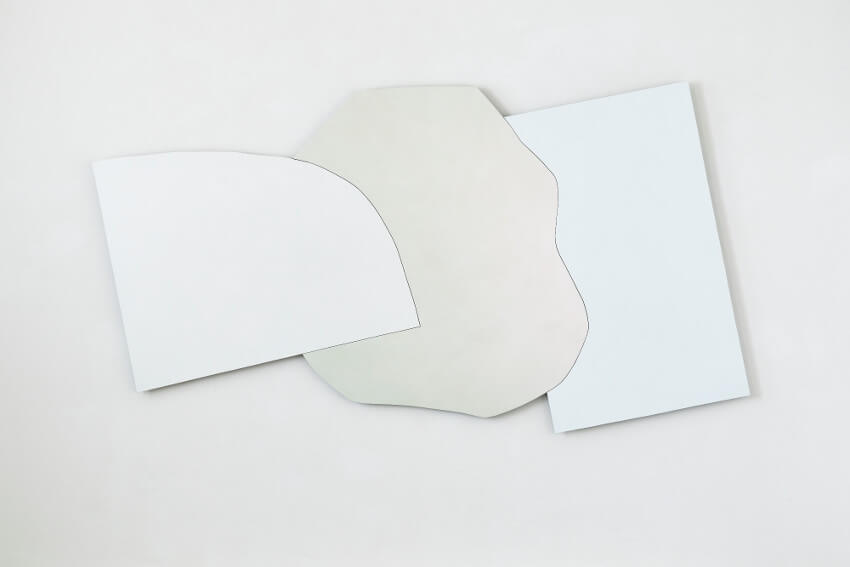 Imi Knoebel - Bild 16.10.2015, 2015, Acrylic on Aluminium, 171,6 x 326,6 x 4,5 cm, Image courtesy the artist and Von Bartha
Imi Knoebel - Bild 16.10.2015, 2015, Acrylic on Aluminium, 171,6 x 326,6 x 4,5 cm, Image courtesy the artist and Von Bartha
Knoebel joined his class, placing himself in the company of many other eager students who would go on to become the most influential artists of their generation, such as Sigmar Polke, Blinky Palermo (with whom Knoebel shared a studio), and Katharina Sieverding. Knoebel absorbed the conceptual approach Beuys offered, and applied it in a multitude of novel ways. One early conceptual thread Knoebel followed dealt with the projection of light onto various surfaces. Using a slide projector, he would project empty slides onto walls, altering the shape of the projected light by changing the angle of the projector. Next he began coloring the slides, carving patterns into them to alter the projected light pattern. In a work called Projection X, he mounted a slide projector to the hood of a car and drove through the streets of Darmstadt at night, projecting an illuminated X onto the passing surfaces of the city.
 Imi Knoebel - Gretchenfrage, 2013, acrylic on aluminium, 131 x 100 x 9 cm, Image courtesy of Von Bartha
Imi Knoebel - Gretchenfrage, 2013, acrylic on aluminium, 131 x 100 x 9 cm, Image courtesy of Von Bartha
The Artist and Society
Though subtle and ephemeral, Projection X was a demonstration by Knoebel of his belief that a work of art can alter society in tangible, if fleeting ways. It was what Beuys called a Social Sculpture. Although eventually, by the 1980s, Knoebel seemingly transitioned solely into the making of objects, he did so with the perspective in mind that through such objects he could achieved the ideals of Social Sculpture. He has taken his work into public spaces by designing architectural installations such as the stained glass windows he created for the Notre-Dame de Reims cathedral. And in 1988, he began a series of works called Kinderstern, or Star for Children. For this series, Knoebel creates red stars that he sells then gives 100% of the proceeds to children in need. The reach of the Kinderstern has been global, and draws a clear connection between the artist as maker of objects, and the aesthetic object as instigator of social change.
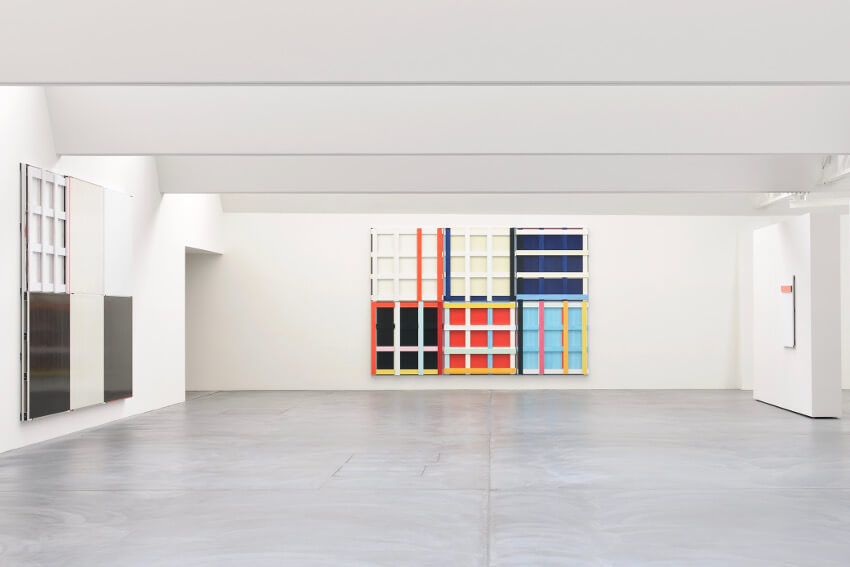 Imi Knoebel - Installation View, 2010-11, Von Bartha, Basel, Image courtesy von Bartha
Imi Knoebel - Installation View, 2010-11, Von Bartha, Basel, Image courtesy von Bartha
When looking at the studio works Imi Knoebel makes, many people compartmentalize them in their minds, seeing them only as objects related to nothing outside themselves. But as the Kinderstern project and the other public works Knoebel has created show, all objects are potential agents of social change. What happens then if we look at every other object Knoebel makes as also a potential change maker? Just because an art object hangs in a gallery and is bought by a collector or an institution, does that make a difference in its potential to affect society? Whenever money changes hands, possibilities arise. Consider the larger point of the work Knoebel is doing. He is making objects, yes. He is offering us abstract images to consider and encouraging us to partake in an aesthetic experience. But he is also inviting us to think about the entire life cycle of the artistic process. These are not just objects hanging on walls. Every work Knoebel creates is full of potential: social potential, economic potential, philanthropic potential. The “possibilities inherent within” his work, as his press materials call them, do not only relate to geometry, color, shape and materials. They relate to the potential of art to be a source of revolution.
New works by Imi Knoebel are on view at Von Bartha in Basel through 29 July 2017.
Featured image: Imi Knoebel, AnImi Mundi 26-5, 2016, Acrylic on aluminium, 37,5 x 225 x 5,7 cm, each 37,5 x 29 x 5,7 cm, Image courtesy the artist and von Bartha
By Phillip Barcio

